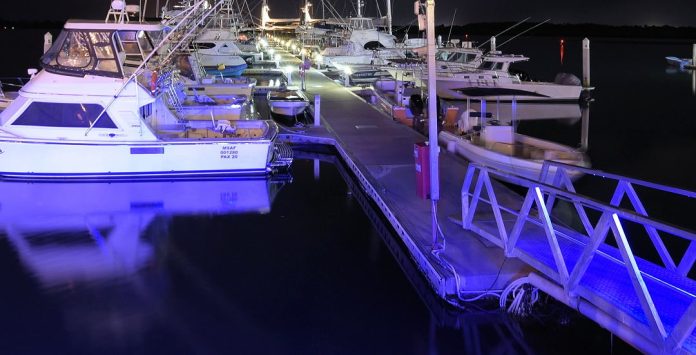We are upgrading a legacy video surveillance system and other security devices on a number of wharves at a marina that were very badly done originally. What are the considerations of an application like this, in SEN’s opinion?
A: You need to be on top of external cabling requirements in any environment impacted on by moisture, salt and sun. There will also be vibration, impact, thermal expansion and contraction, UV damage, damage from chemicals, etc, to contend with. Try to buy hardware that was built to handle such conditions – the last thing you want is unstable poly falling apart 18 months in.
Some marinas are horribly exposed to weather – including strong winds – especially those located on points surrounded by large bodies of water. Pay close attention to mounts and fixings, and think about wind vibration and the impact of moving water and strong wind on pontoons and the large vessels tied to them when choosing your focal length.
There are standards that apply to marinas – AS3004 clause 7.1 is the relevant section in Australia. This covers Wiring Rules, which apply to the delivery of mains power to marina berths – regardless, you can use the standards as a guideline to assist with general wiring for security applications. They will directly apply to any AC delivered to wharf enclosures housing electronic security components.
From a physical installation point of view, you’ll need to use thermoplastic-insulated copper cabling in non-metallic conduit to avoid galvanic corrosion in marine applications. Moving network cables around will require care and planning, too. It may be easier to use more cameras on the landward side of the marina offering coverage of finger wharfs using longer focal lengths. Another option worth considering is wireless. Terminations and connections will need to be well installed and regularly checked. Housings will need to be sealed and shaded – if there’s airflow, boards will need to be conformal coated.
Overhead wiring and aluminium conductors are not permitted at marinas – masts and rigging of sailing vessels are generally aluminium and stainless steel, and may be 30 metres tall. Something else you’ll need to consider is whether the wharf is fixed on piles or whether it floats on pontoons. If the latter, you’ll need flexible sections in your conduit and sufficient play in your wiring to handle peak annual tidal movements. Conjuring articulating cable solutions on the fly can be messy, so plan ahead.
Other considerations in marina applications will include maximum draw of shared power supplies, especially in summer months when the marina is full. Big boats can draw considerable amperage when everything onboard is running except their alternators. And given marinas can be large, voltage drop is going to be another issue. Typically, you don’t want voltage drop to exceed 5 per cent between terminals and outlet. This applies directly to AC, but you should consider it a general rule for all your low voltage and CAT5/6 cabling, as well.
Because of typical marina complexity, you may also find yourself installing junction boxes and managing branches of the wharf from remote distribution points. If there are any sockets involved in your application, you want these outlets protected by circuit breakers – note that there are some areas in Australia which demand RCD protection. A socket outlet in such applications will be 3-pin and rated 15A minimum.
It’s worth noting that marina power environments can be strange. There may be conduits or cables that transit the marina under water and there are also going to be stray currents leaking from boats looking for paths of least resistance. Pay attention to your grounds and be sure to isolate anything made of metal so it can’t be eaten by galvanic corrosion. If you use marina power for your security solution, take a good look at how well it has been done before putting your client’s trust in it.
At all times, pay close attention to standards and wiring rules as you design your system to ensure you meet legislated requirements.
#sen.news









